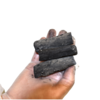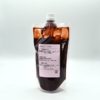Categories Food Worldwide International Barbecue Binchotan Japanese Charcoal
Categories Food Worldwide International Barbecue Binchotan Japanese Charcoal
Categories Food Worldwide International Barbecue Binchotan Japanese Charcoal
Categories Food Worldwide International Barbecue Binchotan Japanese Charcoal
Categories Food Worldwide International Barbecue Binchotan Japanese Charcoal
Categories Food Worldwide International Barbecue Binchotan Japanese Charcoal
Categories Food Worldwide International Barbecue Japanese Barbecue Sauce Premium
Categories Food Worldwide International Barbecue Japanese Leek Dressing (Kujo Negi)
Categories Food Worldwide Fermentation Black Garlic
Categories Food Worldwide Fermentation Premium Black Garlic from Japan
We also recommend
Browse these categories as well: International Barbecue, Hardware for Japanese Barbecue, Hardware for Japanese Barbecue, Holzkohle, New Arrivals
We also recommend
Customers who bought this product also bought
|
|
|
|
|
|
|
Browse these categories as well: International Barbecue, Hardware for Japanese Barbecue, Hardware for Japanese Barbecue, Holzkohle, New Arrivals
We also recommend
Customers who bought this product also bought
|
|
|
|
|
|
|
Browse these categories as well: International Barbecue, Hardware for Japanese Barbecue, Hardware for Japanese Barbecue, Holzkohle, New Arrivals
We also recommend
Customers who bought this product also bought
|
|
|
|
|
|
|
Browse these categories as well: International Barbecue, Hardware for Japanese Barbecue, Hardware for Japanese Barbecue, Holzkohle, New Arrivals
We also recommend
Customers who bought this product also bought
|
|
|
|
|
|
|
Browse these categories as well: International Barbecue, Hardware for Japanese Barbecue, Hardware for Japanese Barbecue, Holzkohle
We also recommend
Customers who bought this product also bought
|
|
|
|
|
|
|
Browse these categories as well: International Barbecue, Hardware for Japanese Barbecue, Hardware for Japanese Barbecue, Holzkohle
Customers who bought this product also bought
|
|
|
|
|
|
|
Browse these categories as well: International Barbecue, Japanese Ponzus, Sauces and Dressings, Food for Japanese Barbecue, Food for Japanese Barbecue
Customers who bought this product also bought
|
|
|
|
|
|
|
Browse these categories as well: International Barbecue, Japanese Ponzus, Sauces and Dressings, Food for Japanese Barbecue, Food for Japanese Barbecue
We also recommend
Customers who bought this product also bought
|
|
|
|
|
|
|
Browse these categories as well: Fermentation, Fermented Products as Black Garlic, Umeboshi etc., International Barbecue, Food for Japanese Barbecue, Food for Japanese Barbecue
We also recommend
Customers who bought this product also bought
|
|
|
|
|
|
|
Browse these categories as well: Fermentation, Fermented Products as Black Garlic, Umeboshi etc., International Barbecue, Food for Japanese Barbecue, Food for Japanese Barbecue



























































 "You can imagine black garlic like a prune with a little more acidity and a little garlic flavor."
"You can imagine black garlic like a prune with a little more acidity and a little garlic flavor."











